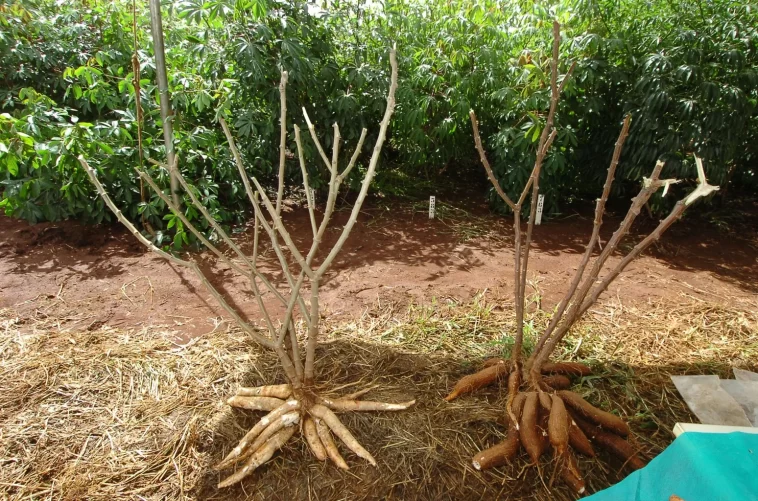We started growing cassava, known as “Yuca” in Costa Rica, when we first moved onto our property. We buried cuttings in horrible hard clay soil and they were totally neglected. To our surprise, they still popped up and produced large starchy yuca roots under the soil. We learned through trials, that the roots produce better in sandy loose soils and any amount of shade will diminish the size of the tubers. Put these puppies in Full sun.
👇See the video below to learn how to plant Cassava cuttings👇
Planting and Growing Cassava
Cassava will grow in any warm climate, including indoors as a potted plant. Planting is fairly simple. You want to use cutting that are bigger than one cm thick and woody colored(no green). They don’t need to have sprouts coming out, but they do need to have the nodules/nubs on them. Some Ticos up in Guanacaste, Costa Rica, swear by burying two cutting a few inches deep in a crisscross style with the ends poking out of the soil. We lay ours down horizontally in loose soil and cover them with 3-4 inches of soil (see video). All methods seem to work and depending on rainfall, breeds, and other climate factors, some may work better than others.
After 7-10 days with a little water, you should see sprouts coming up. Harvest a year or so after planting and enjoy! Then, keep your cutting and plant again.
One of the coolest things about this crop is that it has a very flexible harvest time. If you need to wait a month or 2 to finish eating your last cassava harvest, you can wait. Yuca plants are like having a pantry in the soil. No canning required. Cassava root also has more than double the carbohydrates per gram compared to potatoes. For these reason, cassava is one of our top survival garden plants.
If cassava is used as a vegetable the tubers are best harvested within 12 months to avoid fibrous tubers, but cassava used to make flour or starch are left to reach full maturity, often up to 18 to 24 months after planting. An indication of full maturity is when you see leaves beginning to become yellow and fall.
For more information about Cassava check out our entry in the Plant Database.




GIPHY App Key not set. Please check settings
One Comment